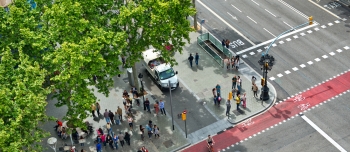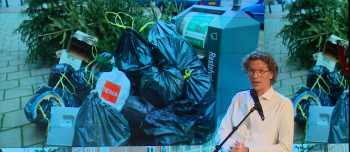CLOSER CITIES aims to create a bridge between urban science and urban practice. By collecting cases on urban practice, analysing them on the shoulders of urban science and sharing research outcomes, urban knowledge becomes shareable. In the ‘5 questions’ series, we ask scientists to briefly reflect on their research and the shareability of their insights and projects.
1. What is the main focus of your research (topic, theme, region)?
The perspectives of citizens on smart city applications in the domain of urban safety, or ‘smart urban safety’, in The Netherlands, specifically in the city of Rotterdam.
2. Can you give a brief description of your research?
My research is about how citizens perceive and react to smart urban safety. To do this, I have investigated actual safety technologies and their privacy implications in Rotterdam, and explore speculative methodologies that can be used to elicit reactions to more futuristic scenarios of smart urban safety.
3. How much influence does ‘local context’ have in your field of work? Can results or solutions from your research be shared with other regions easily?
Municipalities have their own specific safety issues and technologies and policies to deal with them. However, within the Netherlands there are also many similarities, and results of my research are also relevant for other Dutch municipalities. Moreover, much of my research also relies on using novel methodologies to study citizen perspectives on safety technologies of which most citizens are unaware. Insights into such methodologies and the kind of reactions they generate are interesting for an international audience too.
4. What are the main lessons learned that can be used by urban initiatives?
- Urban safety is a very controversial domain of application for digital technologies and tends to generate polarized perspectives from citizens, which makes it vital that applications are discussed publicly and openly. - Efforts to comply with legal privacy frameworks can lead to uses of safety technologies that have discriminatory implications for urban minority groups. - Privacy and safety are often framed as a trade-off between opposing values, but this captures only part of the concerns on the part of citizens. - While civil servants and neighborhood initiatives in the domain of safety tend to emphasize the effectiveness and efficiency of digital technologies, citizens have many concerns about surveillance, privacy and social justice issues and often prefer non-digital means of managing urban safety, but do not see much scope for exerting influence over the development and adoption of new safety technologies.
5. How do you think cities can implement these lessons?
Municipalities and safety organizations and initiatives should start by recognizing that safety and livability issues and their digital solutions are experienced very differently by different groups of citizens, and that choices in safety policy and practice can have serious consequences for vulnerable groups and urban life in general that cannot always be foreseen. Therefore, the involvement of as many different citizens as possible should be accommodated in the planning and development of safety technologies, policies and their actual use in practice. Lastly, potential alternatives to digital means for managing safety should always be taken seriously.












